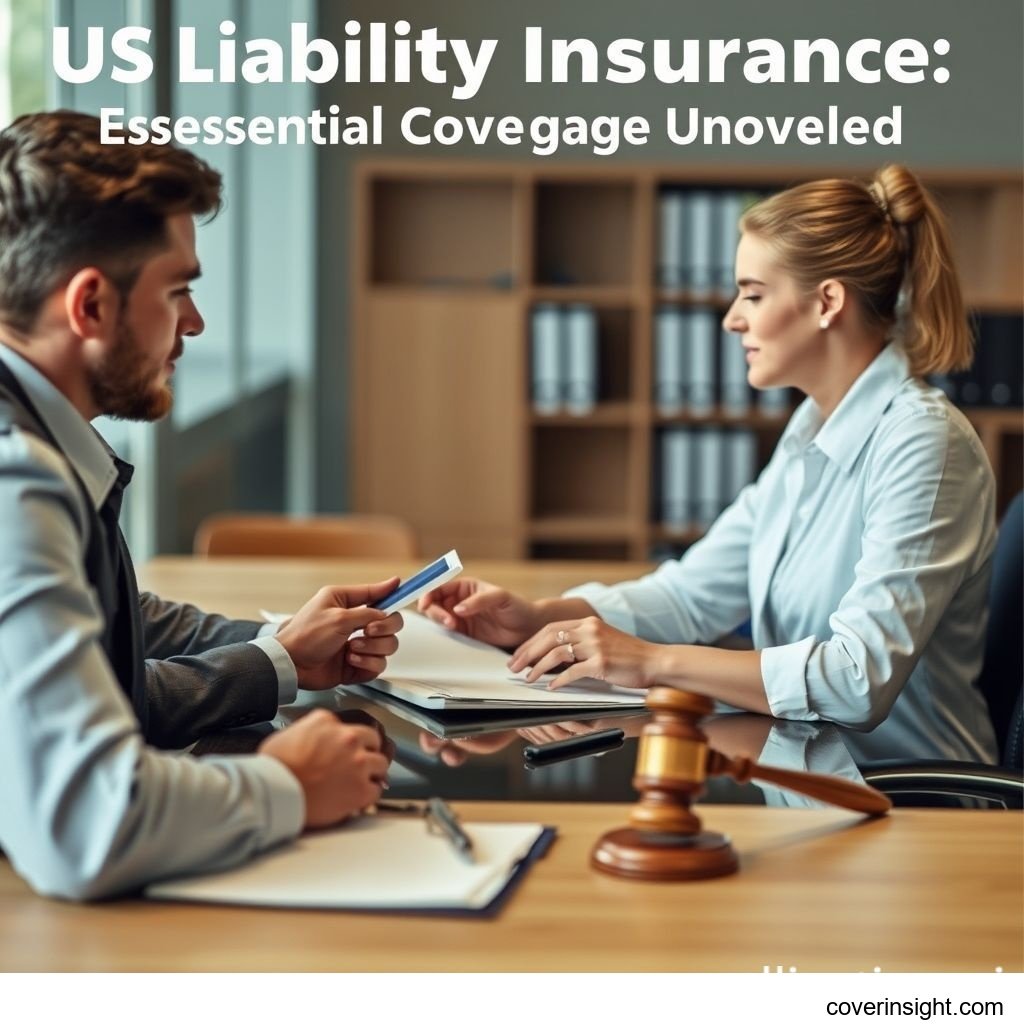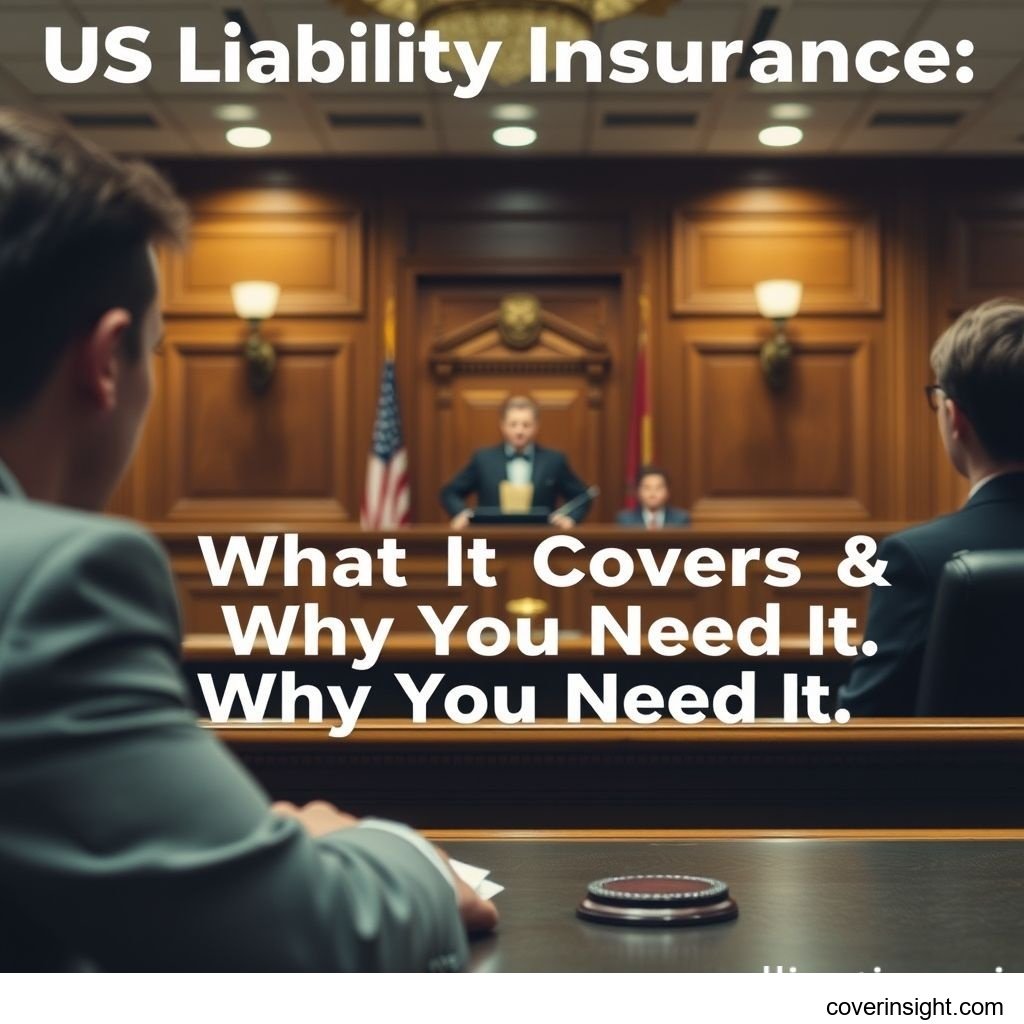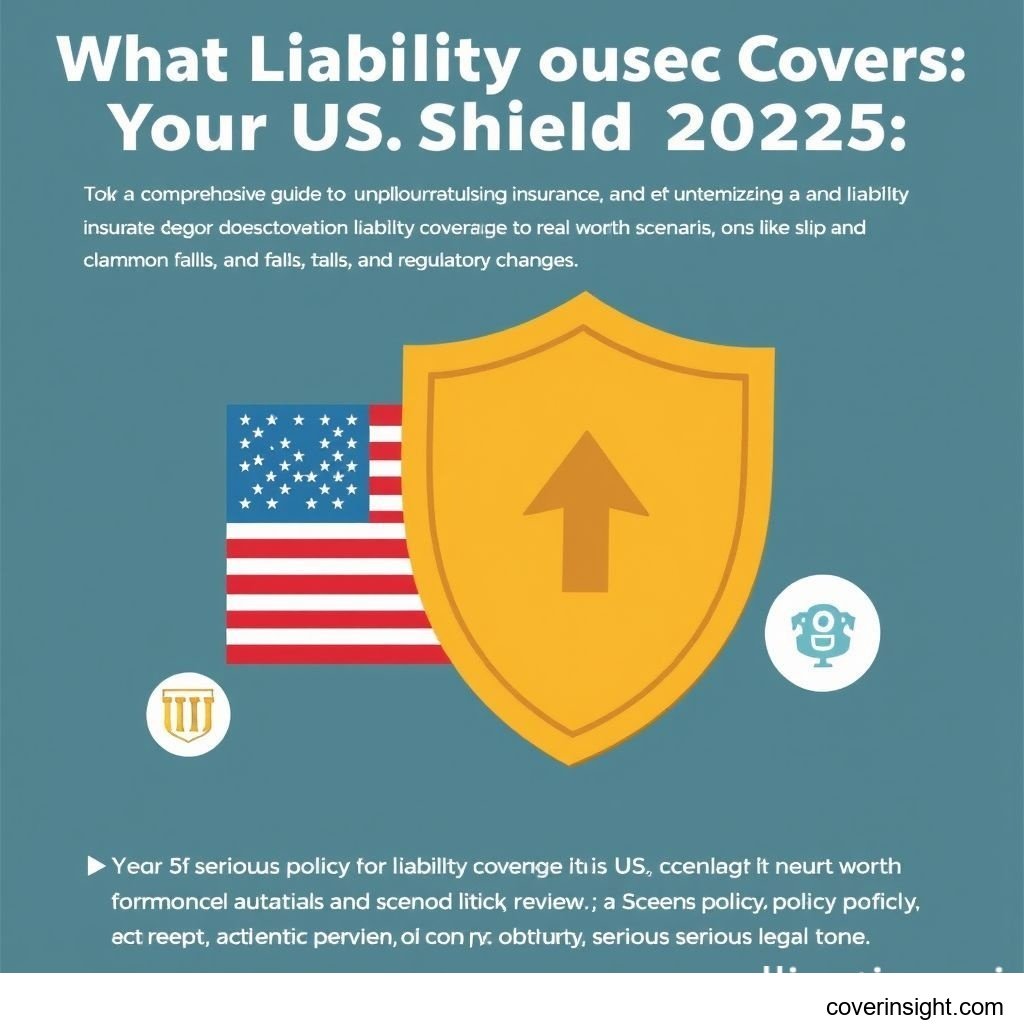US Liability Insurance: Essential Coverage Uncovered
Introduction
In the dynamic landscape of the United States, where unforeseen events can quickly turn into financial burdens, understanding what liability insurance covers is paramount for individuals and businesses alike. As we look towards 2025, the complexity of legal exposures continues to grow, making a robust liability policy not just a safeguard, but an absolute necessity. This essential coverage acts as a financial bodyguard, shielding you from the potentially devastating costs associated with lawsuits alleging bodily injury, property damage, or other specified liabilities for which you are deemed responsible. It's the peace of mind knowing that if a mishap occurs, you won't be left to pick up the pieces alone. For a deeper dive into the specifics, you can always refer to the [Ultimate Guide: What Liability Insurance Covers in US 2025].
Coverage Details
Navigating the nuances of liability insurance can feel like a maze, but breaking down its core components helps illuminate its immense value.
What’s Included
Generally, liability insurance is designed to cover legal costs and payouts if you're found responsible for certain damages. For businesses, this typically includes General Liability Insurance, which protects against claims of bodily injury or property damage that occur on your premises or as a result of your operations. For example, if a customer slips and falls in your store and breaks an arm, or if an employee accidentally damages a client's property during a service call, your general liability policy would typically step in.
Beyond general liability, there are specialized forms. Professional Liability Insurance (often called Errors & Omissions or E&O) is crucial for those offering services, covering claims arising from professional negligence, mistakes, or inadequate work. Think of an architect whose faulty design leads to structural issues – E&O would be their saving grace. Similarly, Product Liability Insurance covers manufacturers, distributors, and retailers against claims from defective products. Legal defense costs are a significant component of almost all liability policies, often covering attorney fees, court costs, and settlement amounts, even if a claim turns out to be frivolous. This can be a huge relief, as legal battles, win or lose, can cost a pretty penny.
Common Exclusions
While comprehensive, liability policies aren't a blank check. There are specific situations they typically won't cover. Intentional acts are almost always excluded – you can't purposefully harm someone or damage property and expect your insurance to pay. Similarly, criminal acts and punitive damages (intended to punish the defendant rather than compensate the plaintiff) are usually outside the scope. Claims covered by other types of insurance, such as workers' compensation (for employee injuries on the job) or auto insurance (for vehicle-related accidents), are also excluded from general liability policies. Environmental pollution, while a form of liability, requires specialized environmental liability insurance. It's crucial to review your policy documents thoroughly to understand these limitations and avoid any nasty surprises down the road.
Cost Analysis
The cost of liability insurance isn't one-size-fits-all; it's a dynamic figure influenced by a variety of factors.
Price Factors
When pondering "How much does what liability insurance covers cost?", it's like asking "How much does a house cost?" – it depends entirely on the specifics. Key price factors include:
-
Type of business/industry: A construction company faces higher risks than a graphic design firm, hence higher premiums.
-
Location: Urban areas with higher litigation rates or specific state regulations can impact costs. For instance, according to data compiled by various US governmental bodies, certain states have significantly higher average liability claim payouts, directly influencing premium calculations.
-
Coverage limits and deductibles: The more coverage you want and the lower your deductible (the amount you pay out-of-pocket before insurance kicks in), the higher your premium will be.
-
Claims history: A history of previous claims can signal higher risk to insurers, leading to increased costs.
-
Business size and revenue: Larger businesses with more employees and higher revenues generally have greater exposure, thus higher premiums.
-
Risk management practices: Businesses with robust safety protocols and training programs might qualify for discounts.
Saving Tips
Worried about the bottom line? There are several smart strategies to potentially reduce your liability insurance premiums without sacrificing essential protection. Consider bundling policies (e.g., general liability with commercial property insurance) with the same insurer, as many offer multi-policy discounts. Opting for a higher deductible will lower your premium, but ensure you have enough liquid funds to cover that initial out-of-pocket expense if a claim arises. Implementing strong risk management strategies – like regular safety audits, employee training, and clear signage – not only reduces the likelihood of claims but can also make you a more attractive risk to insurers. Maintaining a good claims history is crucial; avoid small claims where possible by managing minor incidents internally. Lastly, shopping around and getting quotes from multiple providers is a no-brainer. Don't just stick with the first offer; different insurers have different appetites for risk and pricing models. For more comprehensive insights into global insurance strategies, explore [Insurance Resources Global].
FAQs
How much does what liability insurance covers cost? The cost varies immensely, typically ranging from a few hundred dollars a year for a small, low-risk home-based business to tens of thousands for larger, high-risk enterprises. General liability for a small business might cost between $400 and $1,500 annually, but specialized policies like professional liability or product liability can add significantly more, depending on the exposure.
What affects premiums? As detailed in the "Price Factors" section, premiums are influenced by your industry's risk level, your business location, the amount of coverage you choose, your claims history, the size of your operations, and the deductible you select.
Is it mandatory? Generally, general liability insurance is not federally mandated for all businesses in the US. However, it's often a contractual requirement by landlords, clients, or specific industry regulations. For instance, many states require auto liability insurance for vehicles, and certain licensed professionals (like doctors or lawyers) often must carry professional liability. It's always best to check with your [State Insurance Departments] or legal counsel to understand specific requirements for your situation.
How to choose? Start by assessing your specific risks. A construction company needs different coverage than a consultant. Get quotes from multiple reputable insurers and compare not just price, but coverage limits, exclusions, and the insurer's financial stability and customer service reputation. Don't hesitate to consult with a qualified insurance agent who can help you tailor a policy that genuinely fits your needs. You can also review information from bodies like the [National Association of Insurance Commissioners] for consumer guides.
Consequences of no coverage? Operating without adequate liability coverage is a risky gamble. If you're sued and found liable without insurance, you could face devastating financial consequences, including paying legal defense costs, settlements, or judgments out of your own pocket. This can lead to the loss of personal assets, business bankruptcy, and significant long-term debt, effectively putting you out of business. It’s truly not worth the risk. For more general information about protecting your assets, visit [US Insurance Home].
Author Insight & Experience: Based on my experience observing the American business landscape, one truth rings louder than any other: you simply cannot afford to ignore liability. I’ve seen firsthand how a single, unforeseen incident – a slip, a fall, a misspoken word that costs a client millions – can obliterate years of hard work and savings. It’s not about anticipating every possible disaster, but understanding that in a litigious society like the US, a robust liability policy is your ultimate safety net. It’s not just a line item on a budget; it's an investment in the very continuity and resilience of your enterprise, giving you the freedom to focus on growth, not just damage control.








Comments